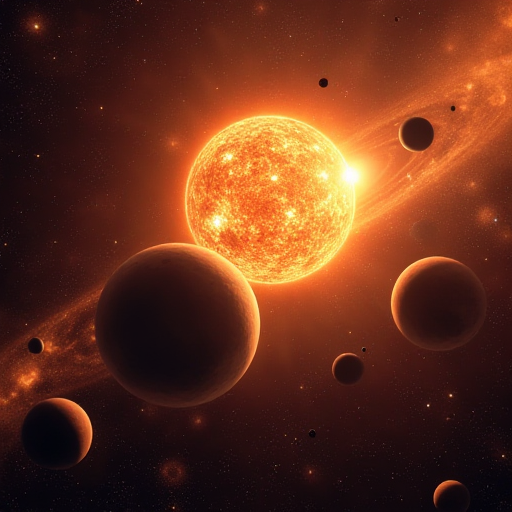
Why Do Planets Orbit the Sun?
The solar system, with its dynamic and fascinating interplay of celestial bodies, has captivated human curiosity for centuries. One of the most intriguing aspects of our solar system is the way planets orbit the Sun. This seemingly harmonious dance is governed by fundamental principles of physics, primarily Newton's laws of motion and the theory of gravitation. In this article, we will explore the reasons why planets orbit the Sun, delving into the historical, scientific, and mathematical foundations that underpin this celestial phenomenon.
The Historical Context
Early Observations
The observation of planetary motion dates back to ancient civilizations, where astronomers like the Babylonians and Greeks meticulously recorded the movements of celestial objects across the sky. However, it was not until the 16th and 17th centuries that a clearer understanding of planetary orbits began to emerge.
Heliocentric Model
Nicolaus Copernicus, in the 16th century, proposed the heliocentric model, which positioned the Sun at the center of the solar system with planets orbiting around it. This was a radical departure from the geocentric model, which placed Earth at the center. The heliocentric model laid the groundwork for modern astronomy.
Kepler's Laws of Planetary Motion
Johannes Kepler, in the early 17th century, formulated three laws of planetary motion based on the meticulous observations of Tycho Brahe. These laws described the elliptical orbits of planets and provided a mathematical framework for understanding their motion around the Sun.
The Physics of Planetary Orbits
Newton's Law of Universal Gravitation
Isaac Newton, in the late 17th century, revolutionized our understanding of celestial mechanics with his law of universal gravitation. Newton postulated that every particle of matter in the universe attracts every other particle with a force that is directly proportional to the product of their masses and inversely proportional to the square of the distance between them. This gravitational force is the key to understanding why planets orbit the Sun.
The Balance of Forces
The orbit of a planet around the Sun is a delicate balance between the gravitational pull of the Sun and the planet's inertia. The gravitational force pulls the planet toward the Sun, while the planet's inertia, due to its velocity, attempts to propel it in a straight line. This balance results in the planet following a curved path, or orbit, around the Sun.
Centripetal Force and Orbital Motion
The gravitational force acting as a centripetal force is crucial for maintaining the planet's orbit. This force continually alters the planet's direction, keeping it in orbit. Without this force, the planet would continue moving in a straight line into space.
The Shape of Orbits
Elliptical Orbits
Kepler's first law states that planets move in elliptical orbits with the Sun at one of the two foci. An ellipse is an elongated circle, and the eccentricity of the ellipse determines how stretched it is. Most planetary orbits in the solar system are nearly circular, with low eccentricity.
Kepler's Other Laws
Kepler's second law, the law of equal areas, states that a line drawn from a planet to the Sun sweeps out equal areas in equal times. This means that planets move faster when they are closer to the Sun and slower when they are farther away. Kepler's third law relates the square of a planet's orbital period to the cube of the semi-major axis of its orbit, providing a relationship between the time it takes a planet to orbit the Sun and its average distance from the Sun.
The Role of Mass and Distance
Mass of the Sun
The Sun's massive size compared to the planets plays a crucial role in its gravitational dominance. With about 99.86% of the total mass of the solar system, the Sun's gravitational pull is the primary force maintaining the orbits of planets.
Distance from the Sun
The distance of a planet from the Sun also affects its orbital characteristics. According to Kepler's third law, planets that are farther from the Sun have longer orbital periods. This is because the gravitational force decreases with distance, resulting in slower orbital velocities.
Conclusion
The orbits of planets around the Sun are a beautiful manifestation of the laws of physics at work. From the early heliocentric model to the precise laws of motion and gravitation, humanity's understanding of this celestial dance has evolved significantly. The interplay of gravitational forces, inertia, and the vast scales of mass and distance create the intricate patterns we observe in the night sky. As our knowledge continues to grow, so too does our appreciation for the wondrous mechanics that govern our solar system.
